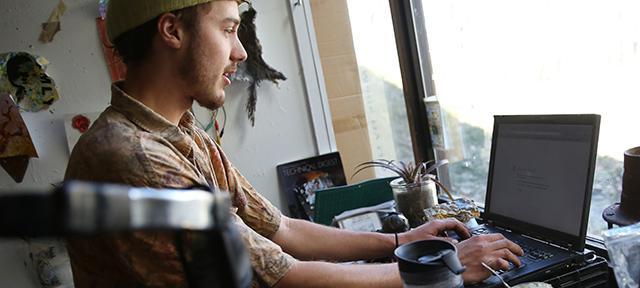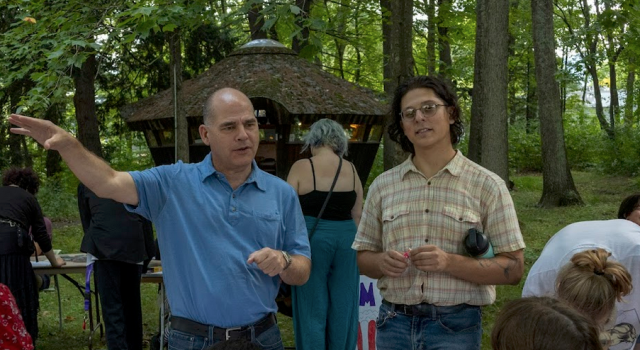Jake Schievink on Power, Desire, and the 'Actualized Computer'

Hometown: West Hollywood, California
Div III Committee: Five College Associate Professor of Art and Technology John Slepian and Visiting Assistant Professor of Art/Sculpture Design Nathan Cohen
Academic Intersections: Sculpture, Robotics
I love working with computers. I just hate everything else about them. I didn’t want to make a Div III project that just makes computer programming and computers look like a “cool thing.”’
I was really inspired by a quote from one of my favorite computer scientists and engineers, Danny Hillis: “A computer is little more than the actualization of man’s greatest desire to possess and control.”
That sent me on this tangent figuring out what digital technology hides beneath these mechanical structures. I wanted to express that in the form of robotic metal sculpture because I’m interested in metalworking and fabrication, and I also did a lot of computer programming here at Hampshire.
My work includes a sculpture meant to integrate into nature. It senses warm bodies and then sprouts vaguely encouraging messages to you. I made a “forehead gallery” — a hat with a digital screen on the brim that displays messages. Anyone can go on a website and submit poems or images for it. I have three people with these across the country right now, just wearing these in their day-to-day life. One is in San Francisco; one was wearing it at the NASDAQ headquarters for three weeks in New York City.
In my artist’s statement, I talk about digital technology being a force of despair as opposed to a force of hope. Almost no one agrees with that outside of Hampshire College. At my final show, this guy was really trying to argue with me and I said, “Well, historically, almost every advancement in digital technology started with the military trying to kill people with it. Every positive thing that’s come from it has been a remarketing of death machines.”
I’m really proud of the conversations the project is generating. This is my preferred way of expressing myself, through sculpture, through different mediums, not just writing or talking. I think this has provoked people to have a conversation about technology.
My Div III committee was Five College Associate Professor of Art and Technology John Slepian and Visiting Assistant Professor of Art/Sculpture Design Nathan Cohen. One of the reasons I chose them is that I knew they would trust me on my own.
Technology used to be a lot more emotional, it used to have a more human element behind it. If you had a knife in the 1700s, that knife was made by someone’s hands. There was some real essence behind it. We’re getting more and more sterile. That’s boring.



